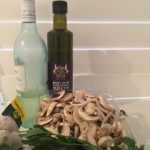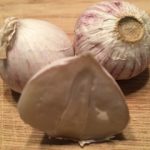Archives
Don’t do this in the bathroom!
During our Coronavirus work schedule, I’ve found some fun hints and tips about plumbing and health that are worth sharing.
How germs spread:
- on your toothbrush,
- your toilet seat,
- and the toilet flush button, are just a few examples.
The Lone Drainer’s Recipe #3
The Lone Drainer’s Mushroom Sauce for Pasta
This doubles as a fabulous addition, as a sauce for steak the next night, and takes care of two of the five vegetables per day that you are meant to eat.
This recipe is an example of The Hardworking Plumber’s Secret Timesaving Tip: Cook It Once, Use It Twice, (tastes sensational both times!).
This recipe is so simple that it is hardly a recipe; but it’s impressive to eat nonetheless and made in a matter of minutes. I put this on the stove, on a low heat, go have a shower, (yeah, yeah, I know its dangerous, but The Lone Drainer and his Team are tired after a hard day on the tools and a shower while dinner cooks saves precious minutes which means we get to eat earlier).
(Ed: gotta give it to Dave Conroy, always thinking, thinking…).
And credit where credit is due, this recipe was pretty well invented by Leigh, the best gasfitter in Sydney’s east, then developed by me, whom some experts would say is the best and most modest plumber in the Eastern suburbs….


INGREDIENTS:
½ a box of already cut up mushrooms, the kind you buy at the supermarket
Left over white wine
Garlic (buy the bags of single clove garlic from Harris Farm Markets as they take less time to cut and peel- see pic)
Three tablespoons of cream
A tablespoon of parsley – if you have it
A decent glug, glug, glug of olive oil, i.e. three big tablespoons if you want to be accurate
A bag of salad mix
METHOD
Chop up the garlic any old how. Small is good.
In a largish frypan, heat the olive oil on a medium heat, add the garlic, fry until it smells good but not brown, tip in the half box of mushrooms, stir, turn heat down, add a cup of white wine, and half a cup of water or stock, (the mushrooms should be more or less covered with liquid), stir and let stew while you take a shower or set the table. Put a big pot of salted water on low heat, (again the amount of salt doesn’t really matter, but if you like precision, a tablespoon will do).
Okay, all cleaned up now, turn the heat up under the pasta water till its boiling, add the pasta.
Throw some of the salad leaves into a bowl and dress with a tablespoon of olive oil and a teaspoon of vinegar. Put on the table. This is your salad to go with the pasta.
Add three tablespoons of cream to your mushrooms and stir. Turn off the heat under them but leave in pan on stove.
Once the pasta is cooked, (it should still have a bit of bite to it as it will go on cooking in the sauce) drain it, put in a largish bowl and add the mushroom sauce to it. Stir and eat. Delicious!

Here is a pic of the pasta in the bowl, ready to eat: (note the inspection outlet in the background – we plumbers are always experimenting with the latest technology)
Next week, we’ll talk about the Plumbers’ pantry cupboard and what you need to keep in it in order to be able to make a delicious dinner in ten minutes flat every night.
Until then,
Read our blog. Cook our food. Admire our plumbing.
